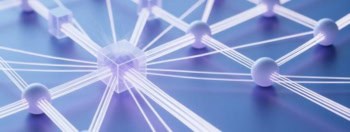Physicists have observed quantized states of matter under the influence of gravity for the first time. Valery Nesvizhevsky of the Institute Laue-Langevin and colleagues found that cold neutrons moving in a gravitational field do not move smoothly but jump from one height to another, as predicted by quantum theory. The finding could be used to probe fundamental physics such as the equivalence principle, which states that different masses accelerate at the same rate in a gravitational field (V Nesvizhevsky et al 2001 Nature 415 297).
The quantum properties of the electromagnetic force are seen in phenomena throughout nature, such as the fixed orbits of electrons within atoms. Similarly, the structure of nuclei demonstrates the quantum effects of nuclear forces. But it is extremely difficult to make analogous observations in gravitational fields because the effect of gravity is negligible at the atomic scale.
To overcome this problem, Nesvizhevsky and co-workers used an intense horizontal beam of ultra-cold neutrons from the reactor at the Institute Laue-Langevin in Grenoble. By directing the beam slightly upwards and allowing the neutrons to fall onto a mirror, also positioned horizontally, the researchers were able to effectively hold the neutrons in a gravitational potential well. Having bounced off the mirror, the small kinetic energy due to the vertical velocity of the neutrons was exactly balanced by the force of gravity at varying heights above the mirror. The neutrons’ lack of charge and long lifetime minimized the effect of forces other than gravity.
Classically, the energy spread of the bouncing neutrons – and so the range of heights to which they could rise – would be continuous. But this is not what the researchers observed. By placing a neutron absorber above the mirror and counting the particles as they moved the absorber up and down, they found that neutrons existed only at certain well defined heights. According to the researchers, these heights correspond to the peaks in a standing wave created when the de Broglie wave of the neutron interferes with its reflection from the mirror. The first peak agreed well with theory, but the researchers still need to confirm the presence of the higher peaks.
Nesvizhevsky says that the experiment could precisely verify the equivalence between inertial and gravitational masses – the reason that all masses accelerate equally in a gravitational field. The set-up could also confirm the electrical neutrality of neutrons. But such studies will require a significant increase in the neutron flux.



